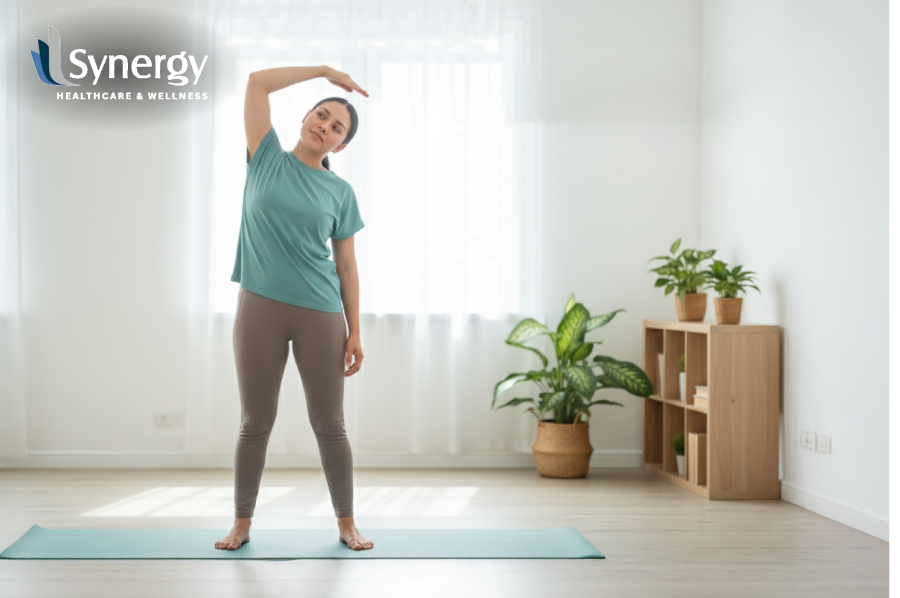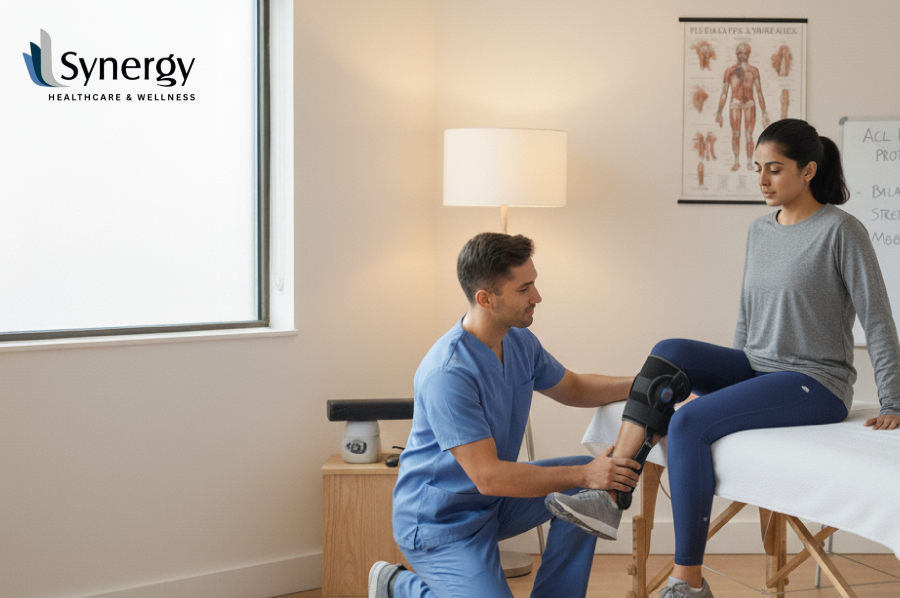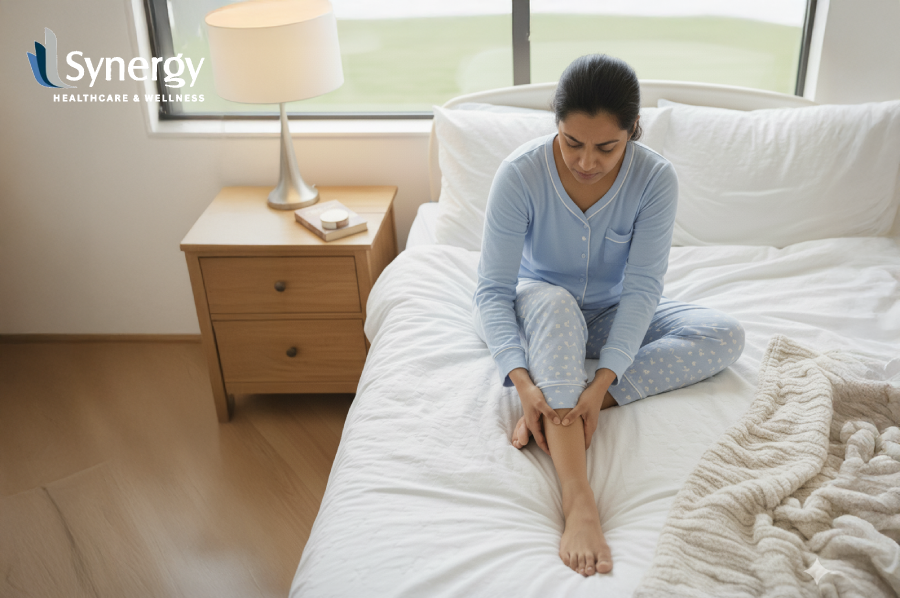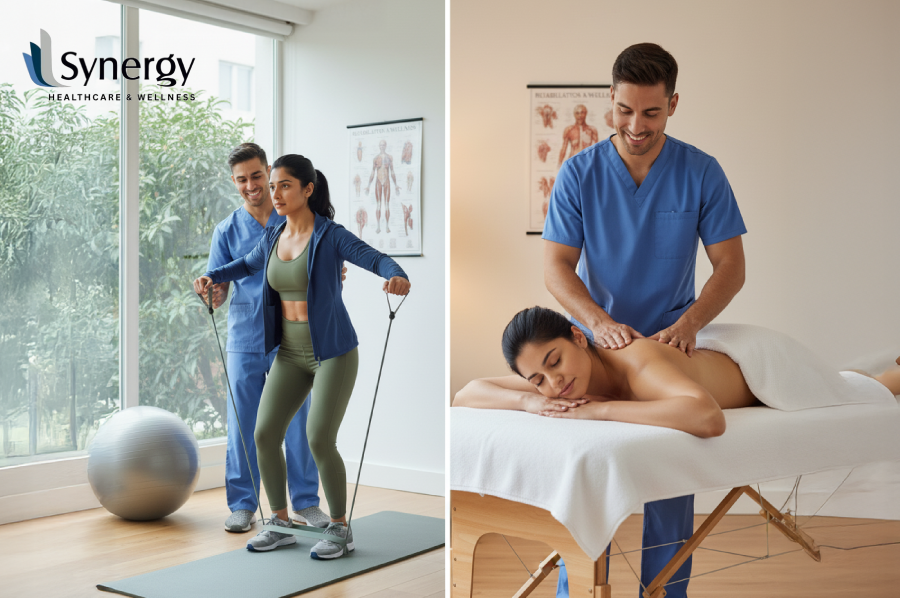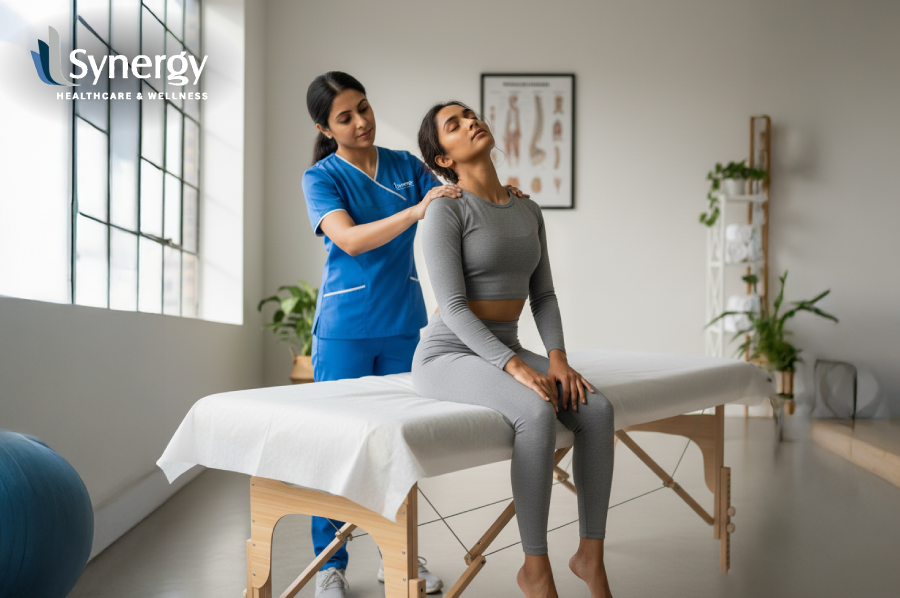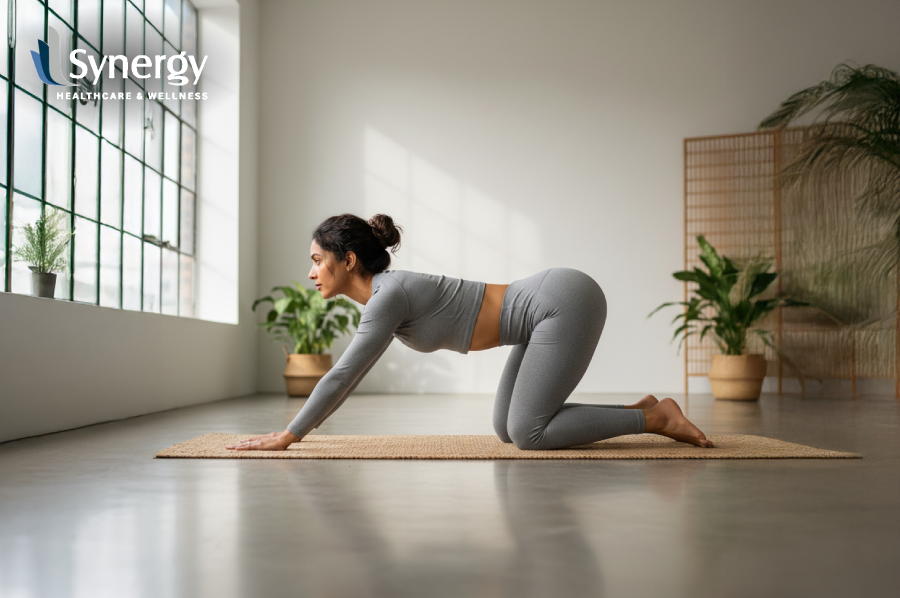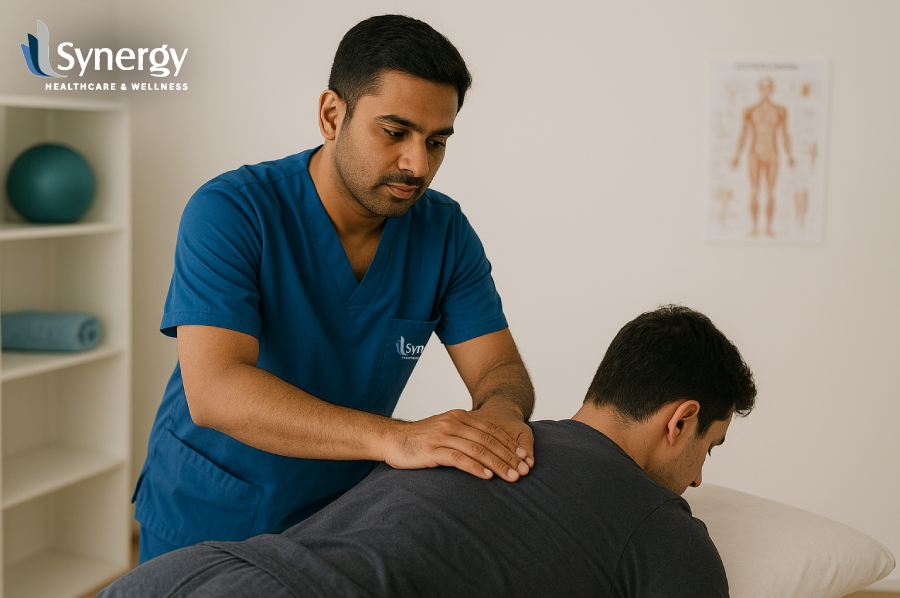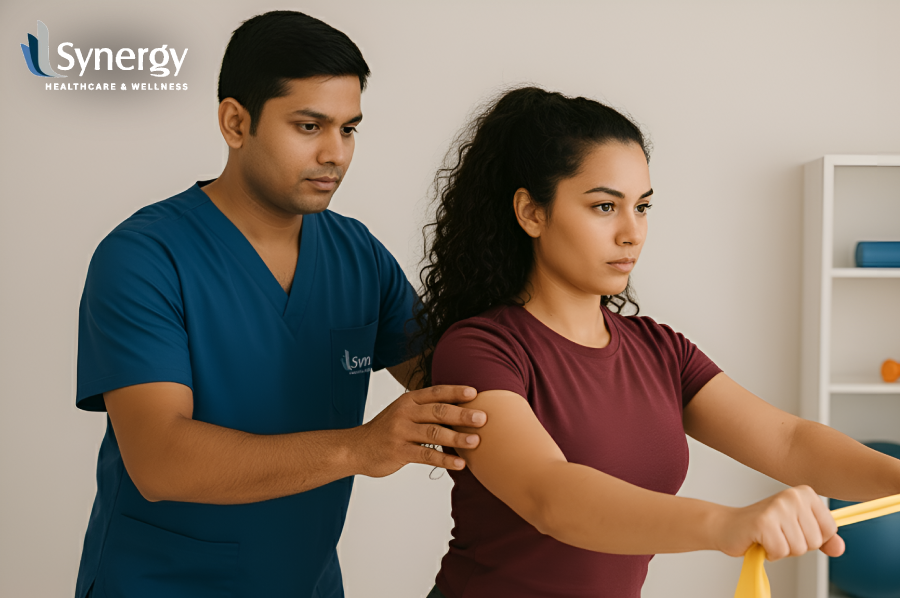Physiotherapy exercises at home helps restore movement, reduce pain, and build strength after injury or illness. While clinical sessions are important, consistent home exercise is equally vital for achieving a lasting recovery.
Why are Home Exercises Important?
Progress in physiotherapy depends on repetition. Regular movement helps muscles and joints regain function, supports balance, and prevents stiffness. A simple home routine builds independence and reinforces the benefits of treatment.
Staying Safe at Home
Before you begin, follow these essential safety steps:
- Get professional advice – A physiotherapist can recommend safe exercises for your condition.
- Start slowly – Increase intensity over time to prevent strain.
- Prioritise technique – Move slowly and maintain good posture.
- Stop if pain occurs – Sharp or radiating pain is a signal to rest and seek advice.
- Exercise in a safe space – Use a flat, clear surface and supportive shoes.
- Be consistent – Short, daily sessions are more effective than occasional long ones.
Gentle Warm-Up
Before beginning strengthening work, warm up the body with gentle movement.
- Neck Mobility: Slowly tilt the head side to side and turn gently.
- Shoulder Rolls: Lift and roll shoulders backward, then forward.
- Ankle Circles: Rotate each ankle clockwise and anticlockwise.
- Pelvic Tilts: Lie on your back, flatten your lower back against the floor, and then relax.
Physiotherapy Exercises at Home You Can Safely Do
Core and Back Strength
- Abdominal Draw-In: Pull your navel toward your spine. Hold for five seconds, then relax.
- Bridging: With knees bent, lift hips to form a straight line from shoulders to knees.
- Bird-Dog: On hands and knees, extend one arm and the opposite leg. Hold, then switch sides.
- Wall Plank: Lean on a wall with forearms and tighten the core for twenty seconds.
Lower Body Strength and Mobility
- Heel Slides: Lying down, slide one heel toward the buttock, then straighten.
- Knee Extension: Sitting, lift one leg straight, hold, and lower.
- Mini Squats: With feet shoulder-width apart, bend knees slightly and return to standing.
- Hip Abduction: Lying on one side, lift the top leg upward and lower slowly.
Upper Body and Shoulder Mobility
- Shoulder Blade Squeeze: Pull shoulder blades together, hold, and release.
- Wall Slides: Slide hands up and down a wall.
- Elbow Flexion: Bend and straighten each arm, holding a small weight.
- Wrist Rotations: Rotate wrists to ease stiffness.
Balance and Coordination
- Single-Leg Stand: Hold a chair for balance and stand on one leg for twenty seconds.
- Heel-to-Toe Walk: Walk in a straight line, placing one foot directly before the other.
- Side Steps: Step sideways five steps out and back.
- Step-Ups: Step onto a low stair, then down, alternating legs.
Sample Daily Routine (10–15 minutes)
- Neck mobility – 1 minute
- Shoulder rolls – 1 minute
- Bridging – 2 sets of 10
- Knee extensions – 2 sets of 10
- Mini squats – 1 set of 8–10
- Hip abduction – 1 set of 10 per leg
- Shoulder blade squeezes – 1 set of 10
- Single-leg stand – 20 seconds per leg
When to Stop or Modify
Pause and consult a physiotherapist if you experience:
- Sudden joint swelling or redness
- Sharp or spreading pain
- Dizziness or shortness of breath
- Tingling or numbness
- Prolonged fatigue
Staying Motivated: Make exercise part of your routine—try ankle circles while watching television or shoulder squeezes at your desk. Track small improvements and celebrate steady progress.
When to Seek Professional Help: Consult a physiotherapist if pain worsens, progress stalls, or new symptoms arise. Regular check-ins help ensure correct form and suitable progression.
Restoring Movement, Rebuilding Confidence
Synergy Physio is founded on the belief that effective rehabilitation comes from knowledge, precision, and partnership. Our practice integrates advanced physiotherapy techniques with personalised care to support recovery, mobility, and long-term wellbeing. Each treatment plan is developed through careful assessment, evidence-based methods, and clear communication between therapist and patient.
We address the cause of discomfort, not only the symptoms, to help individuals regain strength, stability, and confidence in daily life. At Synergy Physio, every session is guided by the same purpose—to restore movement, promote healing, and enhance quality of life through trusted professional care.
Summing Up
Home physiotherapy, when approached with care and consistency, can be one of the most effective ways to maintain strength, restore mobility, and prevent further injury. Every movement, however small, supports the body’s natural ability to recover and adapt. The key lies in steady effort, correct technique, and attention to how the body responds. Follow your therapist’s guidance, progress gradually, and prioritise comfort over intensity. With time, regular practice builds not only physical strength but also confidence in everyday movement. Through patience and mindful repetition, the benefits of physiotherapy extend beyond recovery—helping you move with greater ease, stability, and independence each day.
FAQs
1. Can I start physiotherapy exercises at home without seeing a therapist?
It is best to begin after a professional assessment. A physiotherapist can identify which exercises suit your condition and which movements should be avoided. Starting independently may risk strain or delayed recovery if an underlying issue is overlooked.
2. How often should I do home physiotherapy exercises?
Consistency matters more than duration. Most routines are effective when done once or twice daily for 10–20 minutes. Follow the schedule recommended by your therapist, and increase gradually as strength improves.
3. What if I feel pain while exercising?
Mild muscle fatigue is normal, but sharp, radiating, or worsening pain is not. Stop the exercise immediately and consult your physiotherapist before continuing. Pain is the body’s way of signalling improper movement or overexertion.
4. Do I need special equipment for home exercises?
Most basic exercises require little or no equipment. A yoga mat, resistance band, or small weights such as water bottles can help with specific routines. Focus first on posture and control rather than accessories.
5. Can older adults safely do these exercises?
Yes, with proper guidance. Gentle movements for balance, flexibility, and strength are highly beneficial for older adults. Exercises should be modified to suit ability, and safety measures such as chair support can be added

